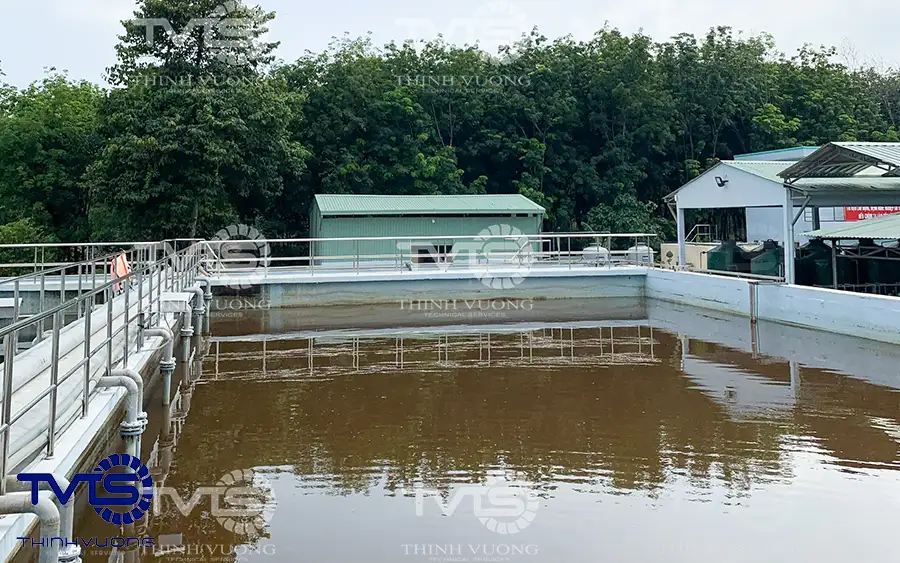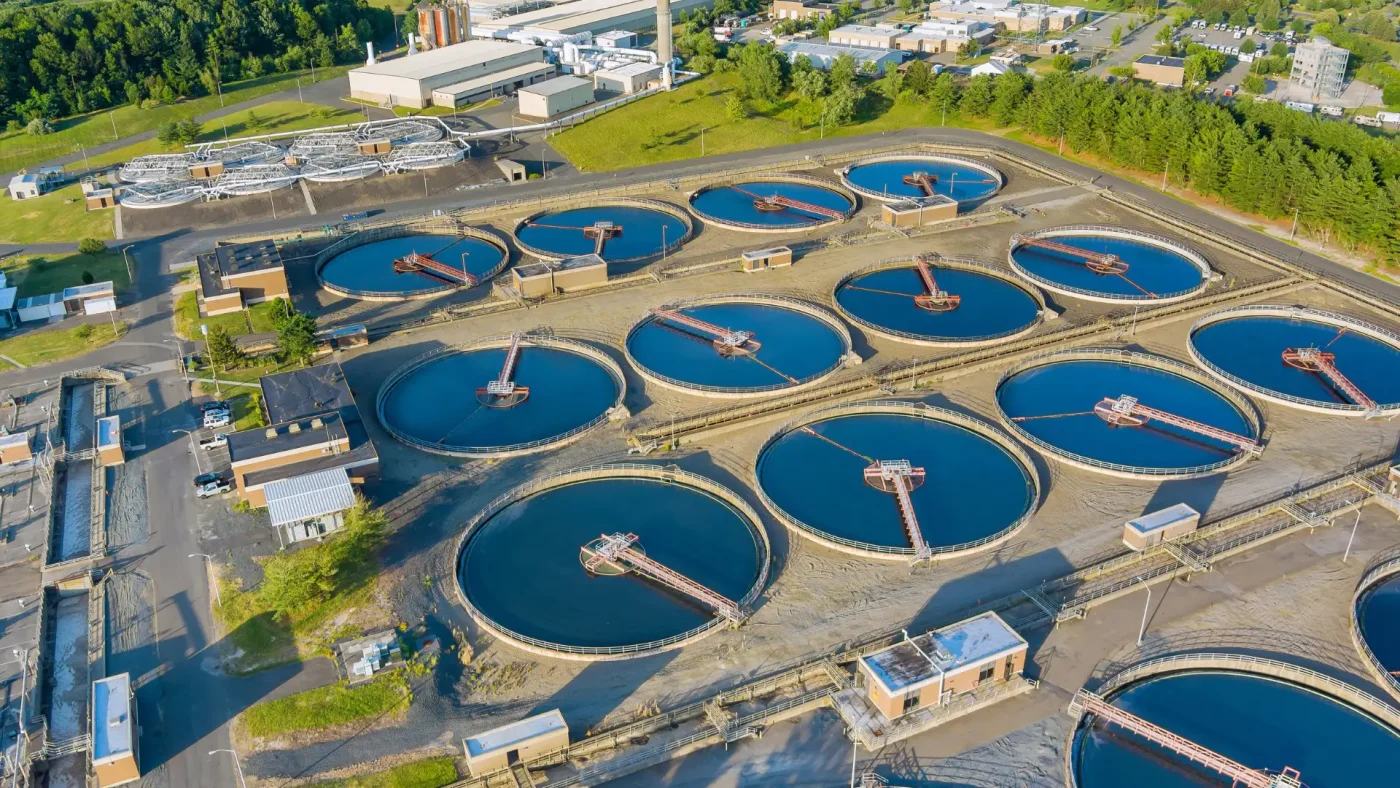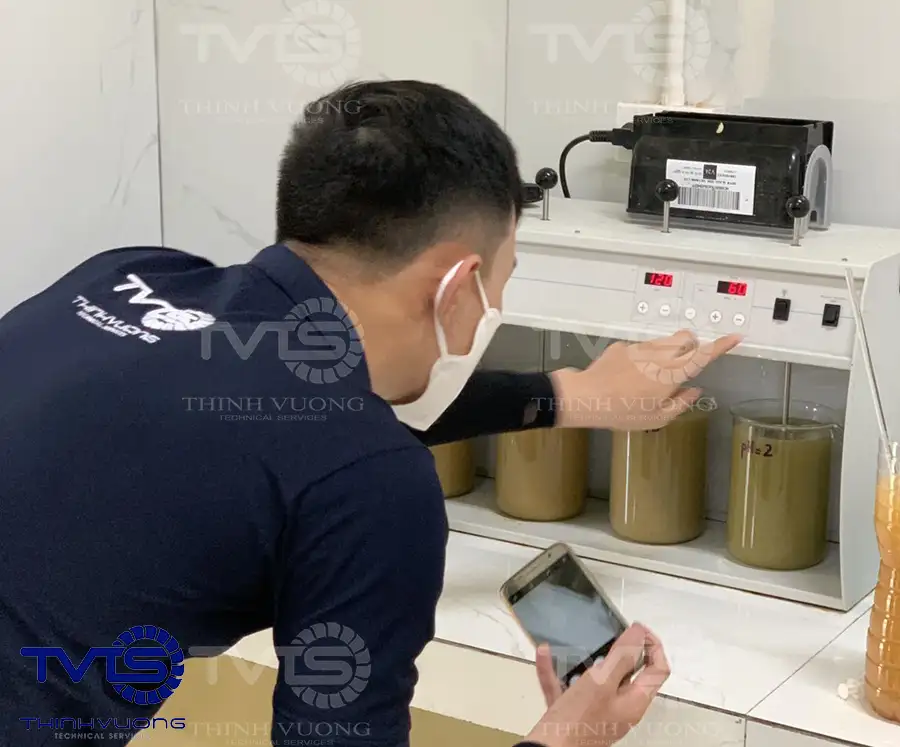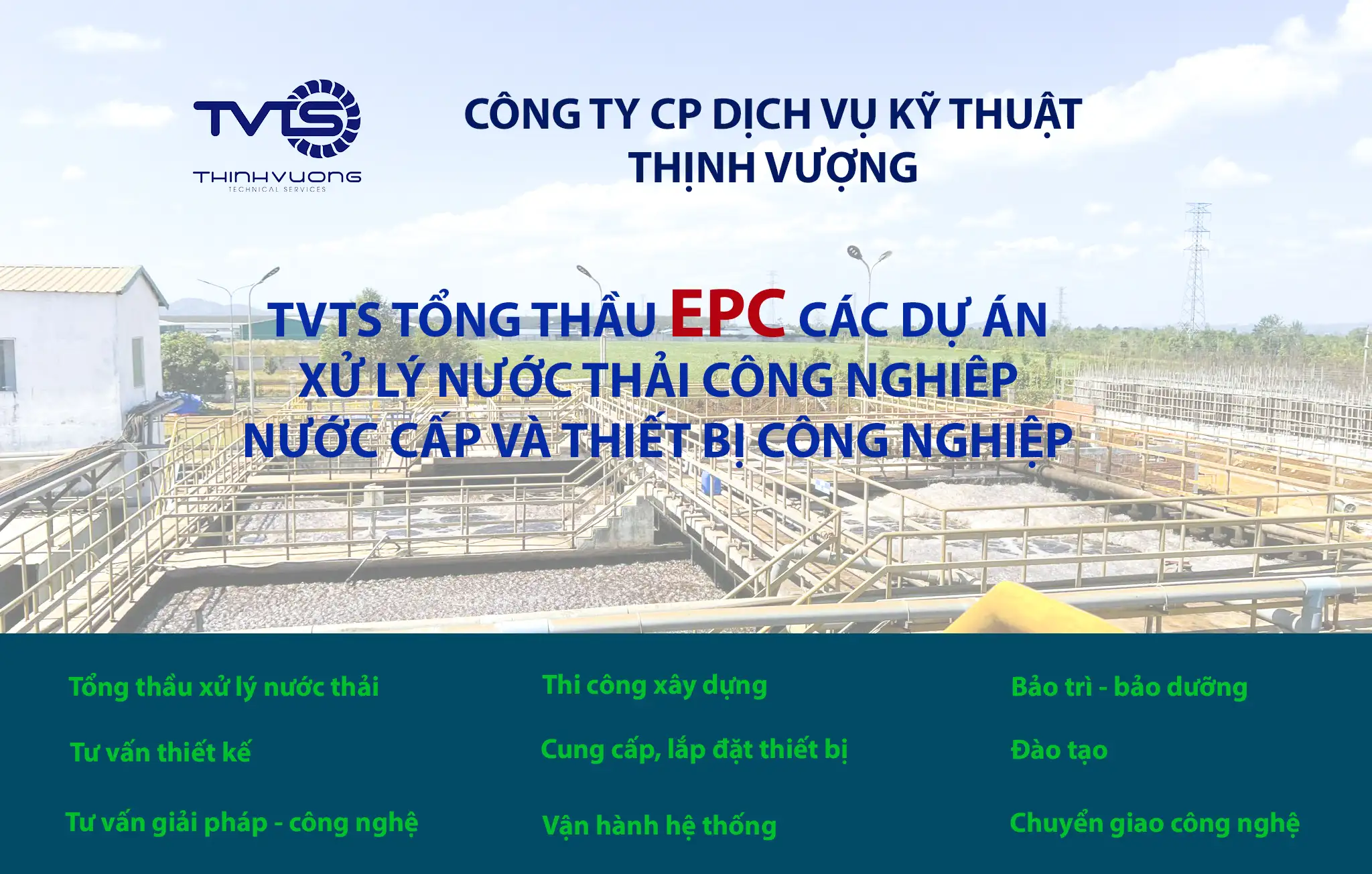1. Industrial wastewater and current status of industrial wastewater treatment
Industrial wastewater is always an issue of concern and attention for countries. The problem of wastewater treatment today is no longer difficult with the development of science and technology. However, the rapid development of industrial zones also places increasing demands on wastewater treatment systems. This leads to current systems not meeting the treatment capacity or quality of wastewater after treatment. The reason may be due to changes in the nature of the input wastewater. This leads to a large amount of untreated industrial wastewater being discharged directly into the environment. This causes water pollution, negatively affecting human health and the ecosystem.

Industrial wastewater often contains heavy metal ions such as lead, mercury, cadmium, etc. These substances not only cause pollution but can also accumulate in living organisms, causing dangerous diseases. In addition, industrial wastewater often contains other metal ions such as iron, zinc, and copper. Although these metals may not be toxic at low concentrations, when accumulated at high concentrations, they also cause adverse effects on the environment and health.
2. Overview of industrial wastewater treatment, significance and role
What is industrial wastewater treatment? It is the process of removing pollutants and toxic substances from industrial wastewater before discharging it into the environment. The process of drainage and wastewater treatment includes many steps, from collecting and filtering out solid impurities, to chemical and biological processes to remove dissolved pollutants. The ultimate goal is to ensure that the treated wastewater meets safety standards for the environment and humans. The industrial wastewater treatment industry plays an important role. Because industry uses a huge amount of clean water, it also discharges a large amount of heavily polluted wastewater. However, industry is a factor that builds success in the economic and social development of a country. Therefore, the industrial wastewater treatment industry is strongly supporting the conservation of natural resources, protecting the environment and promoting the comprehensive development of the country.
2.1 Limitation of wastewater groups belonging to industrial wastewater
The scope of industrial wastewater treatment includes and is not limited to the following wastewater groups:
- Wastewater treatment in concentrated industrial zones;
- Wastewater treatment at wastewater treatment plants;
- High-tech zone wastewater treatment plants;
- Industrial zone wastewater treatment stations

2.2 Wastewater treatment for factories inside and outside industrial parks.
Wastewater treatment for factories inside and outside industrial parks, including manufacturing, processing and assembly industries such as:
- Textile dyeing wastewater treatment
- Pharmaceutical wastewater treatment
- Paper mill wastewater treatment
- Beverage wastewater treatment
- Paper production wastewater treatment
- Sugar cane production wastewater treatment
- Paint wastewater treatment
- Leather wastewater treatment
- Plating wastewater treatment
- Printing ink wastewater treatment
- Cosmetic wastewater treatment
- Power plant wastewater treatment
- Thermal power plant wastewater treatment
- Ceramic tile wastewater treatment
- Mechanical processing wastewater treatment
- Laundry wastewater treatment
- Wood waste water treatment
- Detergent chemical wastewater treatment
- Cosmetic chemical wastewater treatment
- Boiler wastewater treatment
- Seafood processing industry: seafood processing wastewater treatment
- Rubber industry: rubber production and processing wastewater treatment, rubber latex, etc.
- Mining industry: mining wastewater treatment; Coal mine wastewater treatment
- Metal production industry group: Metal wastewater treatment; Steel production wastewater treatment; Metallurgical industry wastewater treatment
- Craft village wastewater treatment
- Slaughterhouse wastewater treatment
- Wastewater treatment of wood factories
- Wastewater treatment of plastic factories
- Wastewater treatment of cement factories
- Wastewater treatment of oil contaminated water
- Wastewater treatment of chi tin production
- Wastewater treatment of plastic granules production
- Wastewater treatment of soft drink production
- Wastewater treatment of ice production factories
3. Industrial wastewater treatment technology process
3.1 Methods and applied technology
Industrial wastewater treatment is increasingly demanding higher water quality. It requires the application of advanced wastewater treatment methods and technologies. The wastewater treatment solutions consulted must meet the following standards:
- Modern technology
- Simple technological process
- High treatment and recovery efficiency
- Easy to upgrade the quality of treated water to reuse or no liquid discharge
- Low operating cost
- Automatic, stable operation, remote monitoring
In addition to the application of modern and high-tech wastewater treatment methods. For the preliminary treatment of industrial wastewater, basic methods such as sedimentation, filtration, and equalization tanks are still often prioritized. Chemical methods are still an important method in the wastewater treatment process. In which, chemicals are used to precipitate and remove pollutants. Wastewater treatment technologies in general and concentrated industrial wastewater in particular are increasingly interested and developed. These technologies often include the use of equipment such as: membrane filters, biological treatment systems, chemical treatment systems, evaporation technologies, … Wastewater treatment methods Industrial processes are not limited to the above processes but are constantly being improved and innovated to meet the increasing requirements of environmental protection. Wastewater treatment technology and equipment play an important role in protecting environmental resources.
3.2 Flow chart of wastewater treatment technology
Industrial wastewater treatment requires simple processes, smart monitoring and operation utilities. TVTS proposes a technological process diagram for hazardous industrial wastewater treatment that TVTS implemented in 2019: [industrial wastewater treatment process diagram] – Updating Actual topic:
- Project: Industrial waste collection and treatment plant
- Capacity: 250 m3/day and night
- Location: Binh Duong
Input water quality: wastewater collected from factories, industrial parks, industrial wastewater, etc.
| Water quality index | Unit | Giá trị đầu vào |
| COD | mg/l | ~ 10.000 |
| TDS | mg/l | ~ 3.000 – 4.000 |
| Amoni (tính theo N) | mg/l | ~ 300 – 400 |
Water quality after treatment:
| Water quality index | Unit | Value after processing |
| COD | mg/l | 75 |
| TDS | mg/l | 50 |
| Amoni (tính theo N) | mg/l | 5 |
3.3 Process description performed by TVTS
Wastewater from the centralized collection tank is passed through a trash separation system to remove trash mixed in the water. Then, the wastewater is led to the ammonia removal tank and the sedimentation tank to remove sludge. The wastewater continues to go into the Fenton tank, where the physicochemical treatment process takes place by adding appropriate chemicals. Then, the sludge continues to be removed in the sedimentation tank. Next, the wastewater undergoes physicochemical treatment with the SBR tank, settles in the sedimentation tank and is sand filtered before entering the RO membrane treatment process. The wastewater is filtered through a rough filter system to remove trash and suspended solids with a size > 10 μm. After filtration, the wastewater will be pumped by a high pressure pump (up to 60 bar) into the TSRO – ROCHEM membrane module system. The wastewater through the TSRO system will be separated into 2 streams. One is a clean water stream and a concentrated stream that collects most of the pollutants in the wastewater entering the RO system. Clean water after RO system is stored in clean water tank for reuse or disposal. Concentrate is stored in concentrate tank before being burned in incinerator with solid waste and sludge.
4. Design, construction and operation of wastewater treatment systems
4.1 Scope of work for wastewater treatment system design
The design of wastewater treatment systems includes determining the size of settling tanks, equalization tanks, filters and other treatment equipment. In addition, it is necessary to consider the possibility of future expansion of the system and ensure operational safety. Effective design not only helps protect the environment but also saves on operating and maintenance costs.

4.2 Construction and some notes during the construction of wastewater treatment system
4.2.1 Construction process of wastewater treatment system
The process of constructing a wastewater treatment system includes survey, design, material preparation, tank construction, equipment installation, operational testing and handover. The survey phase helps determine the appropriate technology. Construction must ensure a solid structure and operational efficiency. After installation is completed, the system is tested before handover to meet environmental standards.
4.2.2 Some notes during the construction of industrial wastewater treatment systems
During construction, it is necessary to choose the right technology for the type of wastewater, comply with technical standards and ensure labor safety. Controlling progress, monitoring quality, and optimizing costs help the system operate effectively. A post-handover maintenance plan is also very important for the system to operate stably and sustainably over time.
4.3 Some wastewater treatment chemicals are commonly used in water treatment system operations.
During the construction and operation of wastewater treatment systems in general and industrial wastewater in particular. The use of chemicals is an important part in eliminating pollutants and ensuring that wastewater meets safety standards. For details on chemicals for wastewater treatment, see “Chemicals in wastewater treatment processes”. Some of the chemicals that can be mentioned are:
- Coagulants;
- Aluminum Sulfate;
- Ferric Chloride;
- Flocculants;
- Polyacrylamide (PAM);
- Oxidizing Agents;
- Chlorine (Cl2);
- Ozone (O3);
- Disinfectants;
- Hydrogen Peroxide (H2O2);
- Sulfuric Acid (H2SO4);
- NaOH (Sodium Hydroxide);
- Sodium Sulfide (Na2S); …

In addition to the use of chemicals, microorganisms also play an important role in wastewater treatment. These microorganisms help decompose organic matter, reduce pollution load and increase biological treatment efficiency. The combination of chemicals and microorganisms helps optimize the treatment process, ensuring the highest quality of treated wastewater.
4. EPC general contractor service – reputable water and wastewater treatment by TVTS
EPC wastewater treatment services provided by TVTS are carried out in Hanoi, Ho Chi Minh City. From most major cities, to all over Vietnam and neighboring countries. With a wide network of branches, partners and projects. Allowing us to always meet the requirements from customers in the fastest and best way. Such as:
- Request for consultation, water and wastewater treatment solutions.
- Survey, assessment, project status.
- Estimate, quote for industrial wastewater treatment system.
- Test run technology at customer’s factory
- And much more, ….

You may be interested in: Basic industrial wastewater treatment system drawings pdf List of documents on water and wastewater treatment
News Industrial wastewater treatment
Do you need advice on technology and solutions for water and wastewater treatment?
TVTS is a contractor providing design consulting services, technological solutions, construction, equipment installation and operation of smart, automatic water and wastewater treatment systems. High water recovery capacity, improving efficiency in investment and operating costs.
Contact us














